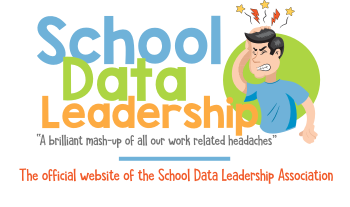 Intellectual tenacity: a willingness to embrace intellectual challenge and struggle. Keeps its “eyes on the prize” and doesn’t give up.
Intellectual tenacity: a willingness to embrace intellectual challenge and struggle. Keeps its “eyes on the prize” and doesn’t give up.
For educators, fostering intellectual tenacity involves encouraging a steadfast commitment to embracing challenges and persisting through academic struggles. This quality is essential for students to develop resilience and the ability to pursue long-term goals despite difficulties. Here’s how educators can effectively promote intellectual tenacity in their teaching practices:
1. Setting Challenging Goals
Educators can cultivate intellectual tenacity by setting high but achievable goals for their students. By challenging students to reach just beyond their current abilities, teachers can push them to expand their limits and persist through difficulty. Clear, structured goals help students focus their efforts and see the value in striving for achievement.
- Assigning long-term projects that require sustained effort over weeks/months like writing a novella or coding a complex program.
- Having students set incremental SMART goals building towards a larger academic achievement.
2. Encouraging a Growth Mindset
Promoting a growth mindset—that abilities can be developed through dedication and hard work—is key to fostering intellectual tenacity. Educators can emphasize the importance of effort over innate ability and praise students for persistence, problem-solving, and gradual improvement rather than just for achieving good grades.
- Praising the problem-solving process rather than just correct answers.
- Discussing inspirational stories of people who overcame initial struggles through hard work.
3. Teaching Persistence Through Problem-Solving Activities
Implementing activities that require sustained effort, such as complex problem sets, long-term projects, or research tasks, teaches students to endure through challenges. These activities help students learn to manage frustration and setbacks, reinforcing that persistence is a part of the learning process.
- Providing complex, multi-step math problems requiring strategic thinking and persistence.
- Assigning open-ended design challenges allowing multiple solution attempts.
4. Providing Support and Resources
While encouraging students to push through challenges, it’s also important for educators to provide the necessary support and resources. This could include tutoring, study groups, or additional instructional materials that help students overcome obstacles and continue progressing toward their goals.
- Making tutoring resources available for students struggling to grasp concepts.
- Offering study skills workshops on strategies like time management and focused practice.
5. Modeling Intellectual Tenacity
Educators can model intellectual tenacity by sharing their own experiences of facing and overcoming professional challenges. Discussing personal anecdotes about how they persisted through difficult projects or continued learning new skills can inspire students to adopt a similar attitude.
- Sharing personal stories of overcoming academic setbacks earlier in life.
- Discussing how professional research or projects don't always go as planned but require grit.
6. Creating a Culture of Perseverance
Building a classroom culture that celebrates perseverance and resilience can encourage students to keep trying even when faced with difficulties. This might involve showcasing examples of individuals who achieved significant accomplishments through persistent effort and discussing what can be learned from their experiences.
- Displaying inspirational perseverance quotes around the classroom.
- Recognizing "Perseverance Awards" for students who demonstrated exceptional stick-with-it attitudes.
7. Utilizing Feedback Constructively
Providing constructive, timely feedback is essential for helping students understand how they can improve. Feedback that focuses on specific areas for growth rather than just highlighting failures helps students see setbacks as opportunities for learning rather than as reasons to give up.
- Providing specific, actionable feedback on how to improve rather than vague criticism.
- Allowing revisions on assignments based on feedback to reinforce learning is iterative.
8. Acknowledging and Celebrating Small Victories
Recognizing and celebrating small milestones along the way to larger goals can motivate students and reinforce the value of their persistent efforts. Celebrations or acknowledgments of these small victories keep students engaged and committed to their long-term objectives.
- Celebrating milestones like making it through a tough unit or meeting reading goals.
- Using visual trackers where students can see their incremental progress over time.
By employing these strategies, educators can help develop students who are not only resilient and persistent but also equipped to handle the demands of complex problem-solving and continuous learning. This approach not only enhances students' academic skills but also prepares them to navigate challenges in various aspects of life with determination and grit.
Educators create classroom environments that value intellectual struggle as an inherent part of learning. Students build the resilience to approach complex concepts willingly, embrace productive failure, and persistently solve problems - empowering them as lifelong learners.
